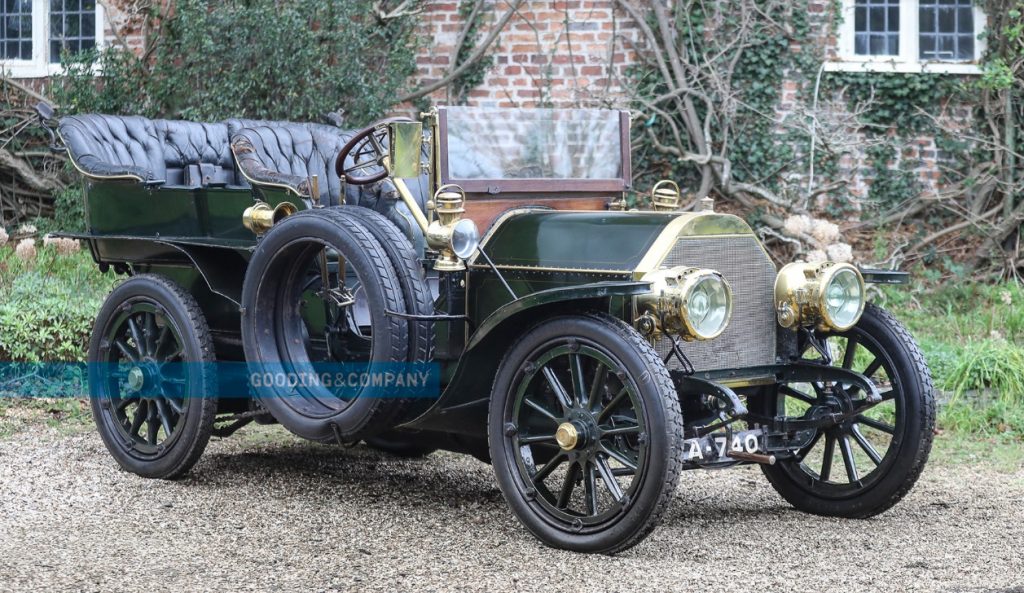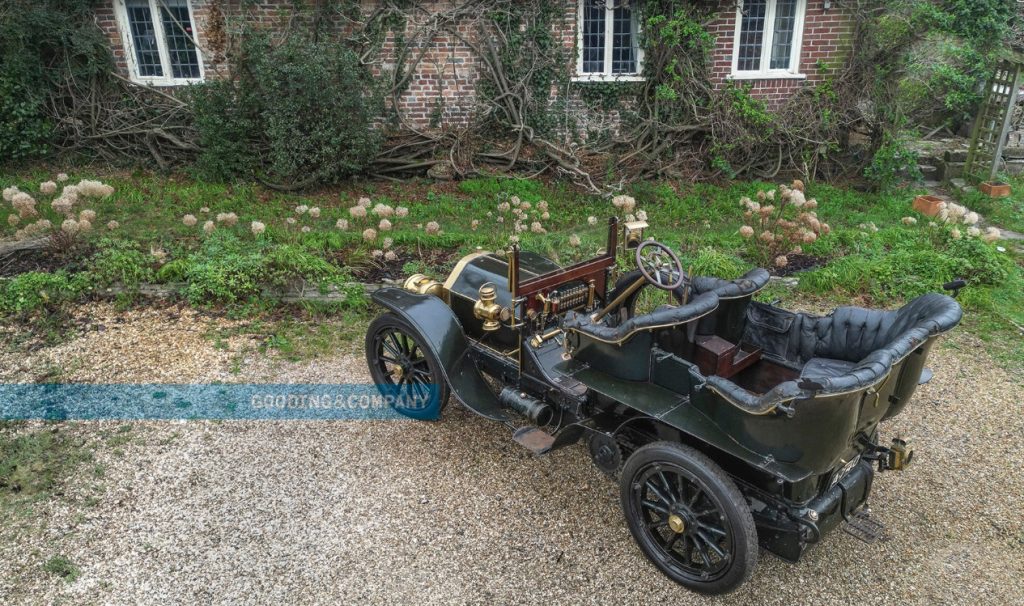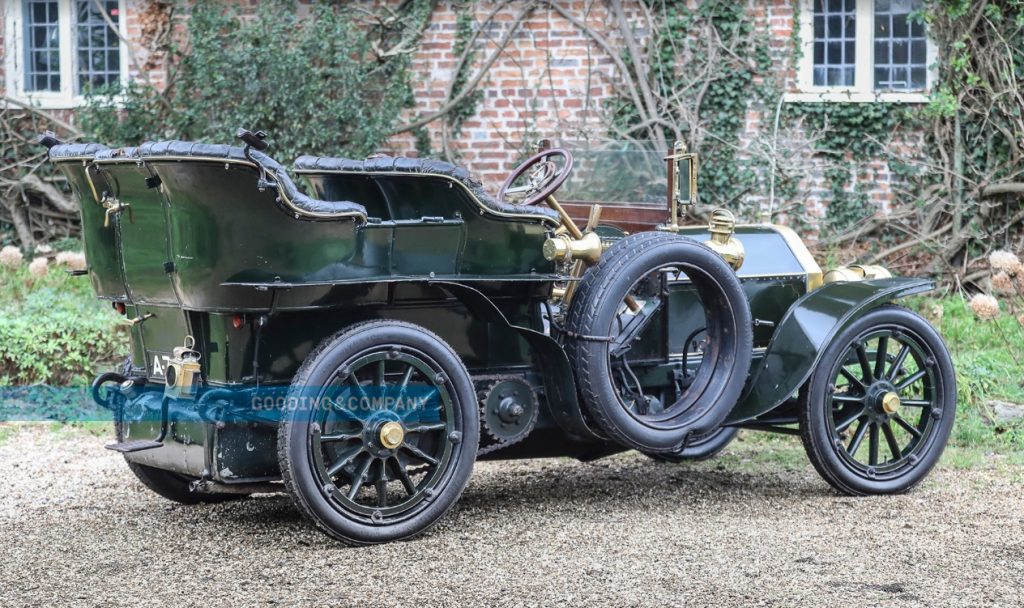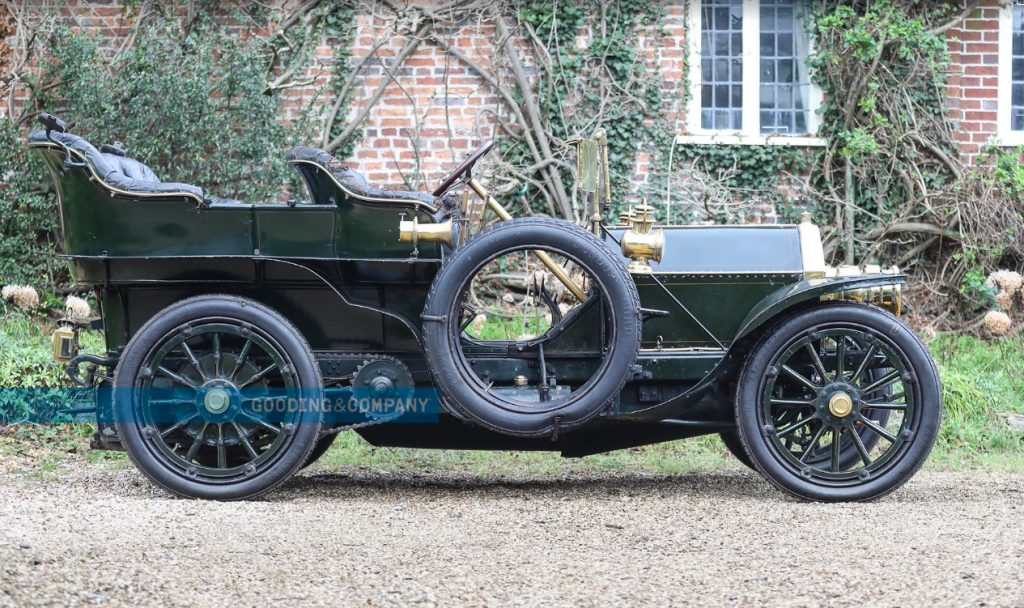1903 Mercedes-Simplex 60 HP Of Daily Mail Founder Is Set To Score $10M In Auction
Giancarlo Perlas February 16, 2024A very important piece in the history of Mercedes-Benz and the automotive world is about to hit the auction block. A 1903 Mercedes-Simplex 60 HP once owned by Daily Mail founder Alfred Harmsworth is anticipated to set records as the priciest antique car to ever be auctioned. It’s expected to score a price “in excess of $10 million,” surpassing the current benchmark held by a 1924 Hispano-Suiza H6C ‘Tulipwood’ Torpedo at over $9,245,000.

One of the World’s First Supercars
Known as one of the world’s first supercars, the Mercedes-Simplex 60 HP was a true marvel of its time, boasting speeds up to 80mph, which was a feat positioning it as the fastest production vehicle at the dawn of the 20th century. Its prowess wasn’t limited to public roads as it also outlasted other vehicles in the racing circuit. With only five of the original models known to exist today, the sale of this antique car represents a rare opportunity for collectors and enthusiasts.
Scheduled to be auctioned by Gooding & Company at the Amelia Island Auctions in Florida, running from February 29 to March 1, this auction is not merely a sale but a landmark event in the realm of classic cars. Steering the event is British auctioneer and television personality Charlie Ross, who hasn’t held back in praising the Mercedes-Simplex 60 HP, calling it ‘magnificent’ and ‘truly historic’. David Gooding, the president of the auction house, echoed this sentiment, highlighting the car’s importance as one of the most significant early automobiles ever to be presented to the market.
Technical Specs
The 1903 Mercedes-Simplex 60 HP packs a 9,236 cc F-head inline-four engine with a single zenith carburetor. As mentioned, it is capable of producing up to 60 hp at 1,1000 RPM, and that output is distributed via a four-speed manual transaxle with dual drive transmission.
Meanwhile, its stopping power comes from two-wheel mechanical drum brakes with a transmission brake. The auto likewise possesses a front beam axle and a rear live axle with semi-elliptical leaf springs.
The Backstory of Harmsworth’s Mercedes-Simplex 60 HP
This particular Mercedes-Simplex 60 HP comes with a rich backstory, closely intertwined with Alfred Harmsworth’s life, a notable figure in British journalism, and an early advocate for motor vehicles. The personality, who later became the first Viscount Northcliffe, was among the inaugural customers of this model.
His enthusiasm for motoring was well-known, as was his role in promoting the Royal Automobile Club’s 1000 Miles Trial in 1900, a time when few believed in the potential of automobiles. The estimated cost of the car when Harmsworth acquired it in 1903 was around $10,000, a significant amount in that era, which underscored his commitment to and passion for pioneering automotive inventions.
Originally manufactured between 1902 and 1905 in Germany, the car was considered to be far ahead of its time not just in speed but in its engineering and design. Unlike the race cars of its era, which were often built solely for the track and bore little resemblance to street cars, the HP 60 could easily transition from a formidable racing machine to a luxurious road vehicle. This versatility was achieved by removing its rear seats and fenders and replacing them with a lightweight two-seat body, enabling it to excel in competitions such as the Nice Speed Week in France and the Ballybannon Hill Climb in Northern Ireland.
Harmsworth’s model, in particular, stood out not just for its impressive performance but also for its distinctive ‘Roi des Belges’ coachwork, featuring rear bulges that housed two seats resembling tub armchairs. This style was emblematic of luxury motoring in the early 20th century. Furthermore, the car’s registration number, A 740, is one of the earliest issued by London City Council, marking it as a true piece of motoring heritage.
Harmsworth made extensive use of the Mercedes, famously touring across the UK and the Continent and showcasing its remarkable capabilities to friends. He affectionately referred to it as the ‘Old Sixty’, a testament to its endearing place in his life and the significant impact it had on early automotive culture. His passion for the Mercedes did not wane until his death in 1922, at which point the car was bestowed to his 12-year-old son, Alfred John Francis Alexander Harmsworth.
Restoration of the Mercedes-Simplex 60 HP
Following its years of adventure and acclaim, the Mercedes-Simplex 60 HP underwent restoration and spent over six decades on display at the Beaulieu Motor Museum in Hampshire. Its legacy continued as it participated in several London-to-Brighton Veteran Car Runs, affirming its status not only as a piece of motoring history but also as a resilient survivor of the passage of time.
Even though the car has been decommissioned since the late 1960s and no longer runs, its value lies not just in its physical capabilities but in its monumental significance to automotive history and technological innovation. It represents a pioneering spirit, a glimpse into the dawn of modern motoring, and the visionary individuals who propelled the automobile from a novelty into an integral part of daily life.







